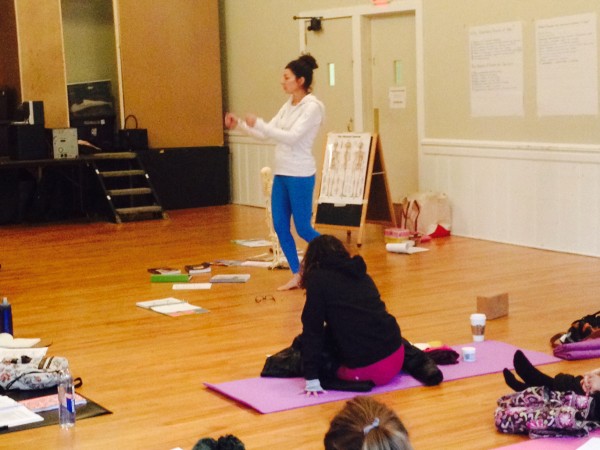
I love working with new teachers. In a recent training, a few questions came up and I thought I’d write about them in today’s blog. In my book, “Stretched: Build Your Yoga Business, Grow Your Teaching Techniques,” I detail much of this more but here are some highlights:
“What is the difference between being “Certified” and being “Registered” as a Yoga Teacher?”
This comes up in trainings a great deal, especially when teachers start to think about how to create marketing materials for themselves and what to write in their email signatures and on their websites. Generally speaking, here’s a way to distinguish between the two:
Certification is given you to by a particular teacher and is a personal endorsement of you as a teacher, based on personal interaction and supervision that that teacher has provided you.
Registration is a status given by Yoga Alliance, the Registry of Yoga Teachers, and is an acknowledgment that you have completed a 200 Hour training with a school that they recognize as one that is providing 200 hours of training. This training includes the components that they hold out as the standards for a beginning yoga teacher (See www.yogaalliance.org for specifics).
Sometimes, in documentation, marketing materials, websites or email signatures, teachers will add “Certified Yoga Teacher” or “CYT” after their name when they have completed a 200 hour training but not one specific to a particular teacher who offers a certification pathway. Or, perhaps they have taken trainings with that teacher but have not completed that teacher’s certification program completely.
Why does this matter? Well, it matters only as much as you wish to be presenting your training consistently and correctly when it comes to the standards in the yoga industry. Please know that I am not commenting on the quality of programs in any way; only stating my understanding of the industry details as they exist today.
One of the challenges of our industry is there often little business support to teachers and many graduate from training without a lot of support around these kinds of questions. If you have questions, it can be helpful to touch base with a senior teacher. Also, as you look to continue your training as a teacher, you can always seek out one that teaches in a style that resonates with you and see if they provide a certification pathway.
Also, please consider that the presence of a certification pathway is not in and of itself a guarantee of quality. It’s always helpful to practice with and take some workshops with a teacher you like, read up about them and talk to others who have invested in their trainings before investing in it yourself. Also, there are many specific in-depth trainings you can take that do not result in certification but do result in a Certificate of Completion. These would include topics such as anatomy, functional movement and other intensive areas of study.
“I am teaching at a gym and they told me that because I am not a Fitness Instructor, I don’t need liability insurance.”
This is incorrect. In short, you always need liability insurance. This is true regardless of where you teach. Teaching insurance is your first line of defense should you be included in a lawsuit brought on by someone in one of your classes. Teaching insurance covers you regardless of where you are teaching. If your employer needs an insurance certificate that includes them as an “Additional Insured” ( referring to them as an additional covered party under the policy), you can get a document that states that.
“Should I bring notes with me every time I teach and work out a pre-determined sequence before every class?”
Let me start by saying this is a personal thing. Let me also say that what I will present to you, just like the detail in my book, is only from my own experience of teaching for the past 13 years. Here is my thought: preparation is great but stick to the same sequence for a long time before you change it every time. This can be really hard for new teachers, especially now. When I started teaching, there was no Facebook, there were no i phones, I never taught with music. I never rolled out a mat. I was trained to teach in quiet room, by speaking and looking at the student. I was taught to assist, taught to cue essentially and through many, many years of teaching in that way, I learned to manage the flow, the room and the process with increasing ease. Having a base sequence also allowed me to manage better (and with less stress) all the little things that come up that you can never plan for that might create stress.
Also, remember: bringing notes to class, while it shows a high level of dedication and preparedness, can be a crutch to seeing your students and being present. Do the prep for one sequence. Learn it well. Bring the notes at the start and then leave them home. Don’t put out a mat. Don’t use music. Get really, really comfortable with all that. Then, slowly, add on. If at all.
There is so much to teaching. Don’t rush it and it will all come. However, do your homework and remember that on the business side of things, you are solely responsible for what you do, how you present yourself, how you cover yourself from an insurance standpoint, the content of your emails, the way you track all the data associated with your teaching. No one else but you. While this can be great, it can also be overwhelming. Please check out my blog for many excerpts from my book,“Stretched.” I wrote it just for this reason. To share what I know, to share what I went through as a teacher ( and continue to go through ) and to make things as transparent as possible.
